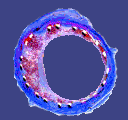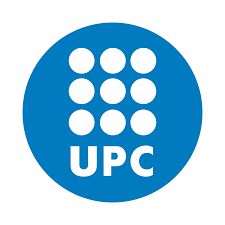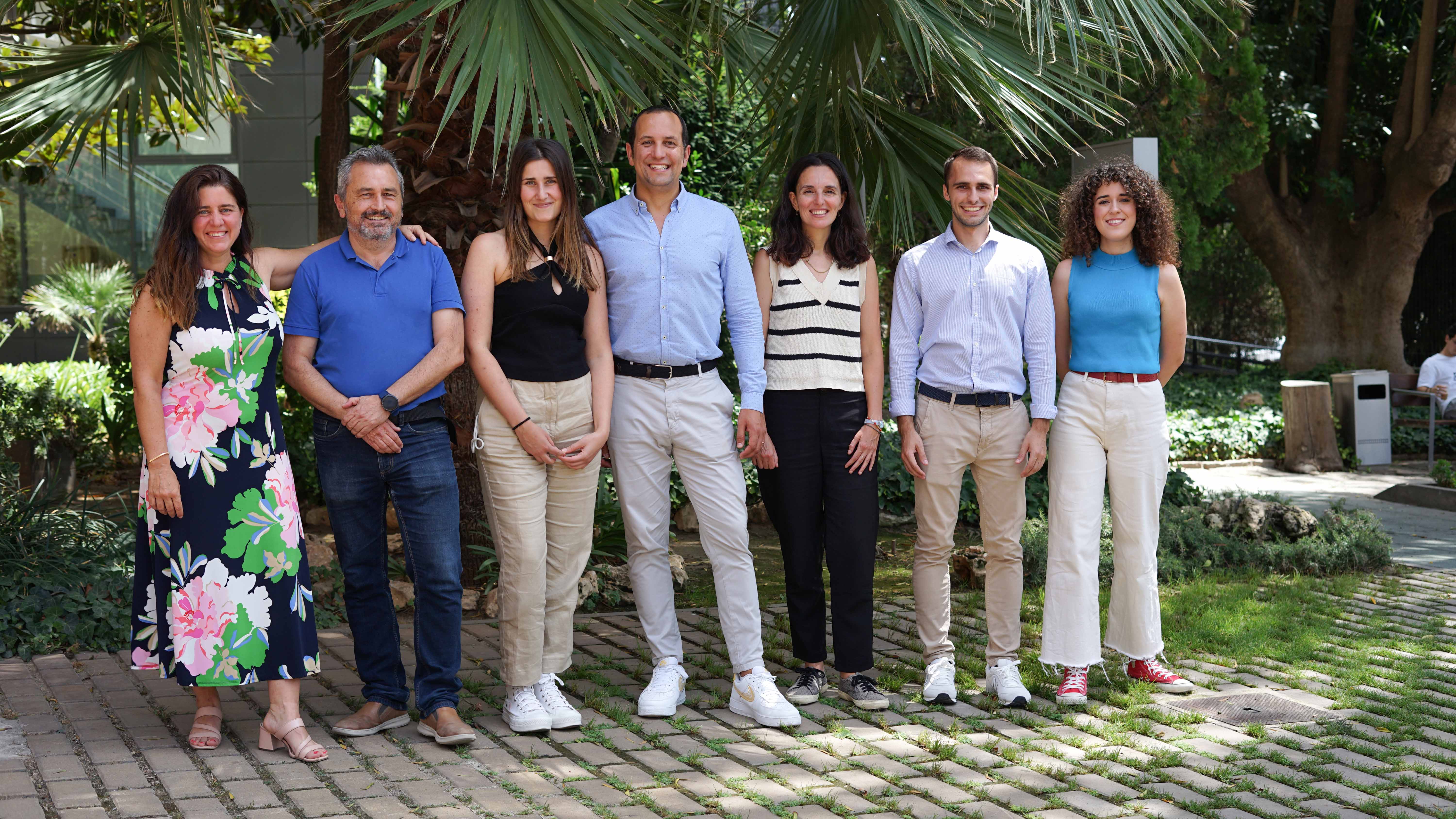FULL PARTNERS

 Harvard-MIT Biomedical Engineering Center.
UPC
Harvard-MIT Biomedical Engineering Center.
UPC
(1/7/22-30/6/25) Plan Nacional POLYCOARCT PID2021-124868OB-C21
"DISEÑO, PRODUCCION Y CARACTERIZACION DE STENTS AUXETICOS CAPACES DE CRECER CON EL PACIENTE. CARACTERIZACION IN VITRO EIN VIVO DE STENTS EN AORTAS PEDIATRICAS COARTADAS"
"Design, manufacture, and characterization of auxetic stents capable of growing with the patient. In vitro and in vivo characterization of
stents in coarctate pediatric aortas."
RESUMEN:
La "coartacion aortica" es un estrechamiento anormal de la aorta, arteria principal de nuestro cuerpo. 4 de cada 10.000 bebes nacen con
esta grave complicacion. Representa del 4-6% de todos los defectos cardiacos congenitos y es mas comun en hombres que en mujeres
(59%-41%). La lesion es muy heterogenea, se presenta en personas de todas las edades y puede ir acompañada de otros defectos
cardiacos. En algunos casos, los pacientes pueden permanecer asintomaticos durante años, pero si el estrechamiento de la aorta es
severo, aparecen presion arterial alta, dolores de cabeza, dolor en el pecho y debilidad muscular. Si no se trata, la coartacion aortica
puede provocar insuficiencia cardiaca, renal y de otros organos. La tasa de mortalidad en pacientes en los que la lesion no se repara es
del 90% a los 50 años, con una edad media de 35 años.
En la actualidad la coartacion aortica se trata mediante dos enfoques principales. El primero implica cirugia a corazon abierto para extirpar
quirurgicamente el segmento aortico estrechado. El segundo, menos invasivo, es la angioplastia con balon y la implantacion de un stent
endovascular que reabre el lumen con un cateterismo. Desafortunadamente, estos tratamientos presentan complicaciones graves a largo
plazo, como aneurisma, rotura o diseccion de la aorta, arritmias o hipertension. La cirugia abierta conlleva un alto riesgo de efectos
secundarios, especialmente neurologicos, debido a la naturaleza extremadamente invasiva de la intervencion. Los pacientes intervenidos
con un abordaje endovascular, especialmente los mas jovenes, tienen un alto riesgo de sufrir daño vascular, ya que los cateteres son
demasiado gruesos para las arterias del bebe.
El efecto secundario mas recurrente de la cirugia es que la mayoria de los pacientes, a pesar de las mejoras en la tecnica y los
materiales, requieren reintervenciones frecuentes.
Nuestro objetivo principal es diseñar y desarrollar nuevos stents polimericos adaptables a las necesidades de crecimiento arterial de los
niños afectados de coartacion que reduzcan o erradiquen nuevas intervenciones.
La hipotesis es que stents con materiales capaces de adaptar gradualmente sus propiedades con el tiempo podran igualar los cambios
arteriales provocados por el crecimiento natural y la remodelacion tisular en el tratamiento de la coartacion aortica pediatrica. Mas
especificamente, planteamos la hipotesis de que los diseños auxeticos y/o los materiales con memoria de forma superaran a los stents
metalicos, mantendran abierta la luz arterial durante mas tiempo debido a una mejor integracion del dispositivo con el vaso sanguineo en
crecimiento.
Las enfermedades congenitas pediatricas plantean un desafio de diseño especial: materiales novedosos capaces de integrarse a largo
plazo en el cuerpo en crecimiento de un bebe/niño. Este no es un problema trivial, y su solucion abarca muchos dominios (ingenieria,
quimica, ciencia de materiales, biologia vascular y medicina) y niveles, desde moleculas y celulas hasta estructuras y organos de
dispositivos. Nuestra propuesta ofrece una oportunidad unica para consolidar una colaboracion a tres bandas muy interesante entre dos
grupos de investigacion en Barcelona que poseen una conexion muy fuerte con Boston y el MIT. Los resultados y conocimientos
obtenidos en el pasado, el dialogo interdisciplinario, el intercambio de estudiantes y el esquema de trabajo inspirador desarrollado
serviran de solida base para esta propuesta.
SUMMARY:
The term aortic coarctation describes an abnormal narrowing of the main artery in our body, the aorta. Each 4 of 10,000 people are born
with this serious complication. It accounts for 4-6% of all congenital heart defects and is more common in male than in females (59%
versus 41%). The lesion is very heterogenous and presents itself in people of all ages and may be accompanied by other cardiac defects.
In some cases, individuals may be asymptomatic for years, but if the narrowing of the aorta is severe, high blood pressure, headaches,
chest pain, and muscle weakness appear. If left untreated, aortic coarctation may lead to heart, kidney, and other organs failure. The
mortality rate in patients in whom the lesion is not repaired is 90% by age 50 years, with a mean age of 35 years.
Clinicians today treat patients with aortic coarctation using two main approaches. One approach involves open heart surgery to surgically
remove the aortic segment with the severe narrowing. The other, less invasive approach is balloon angioplasty and implantation of an
endovascular stent which re-opens the vessel lumen accessing it from within using a catheter. Unfortunately, none of these treatments is
free from long-term serious complications such as aneurysms, aortic rupture, dissection, arrhythmias, re-coarctation, and hypertension.
Open surgery carries a high risk of secondary effects, especially neurological, due to extremely invasive nature of the intervention. Patients
intervened with and endovascular approach, especially the youngest, are at high risk of suffering from vascular damage, as the catheters
are too thick for the small caliber arteries of the infant.
The most recurrent side effect of surgery is that most patients, despite improvements in technique and materials, require frequent
reinterventions.
The main objective of our proposed research is to design and develop new polymeric stents adaptable to the artery growing
needs of children affected with coarctation that effectively minimize and/or eradicate new interventions.
The working hypothesis of this project is that stent designs coupled with materials able to gradually change their properties with time (i.e.
expand and degrade) will be able to match arterial changes provoked by natural growth and tissue remodeling in the treatment of pediatric
aortic coarctation. More specifically, we hypothesize that auxetic designs and shape-memory polymeric materials will outperform metal
stents and hold the arterial lumen open for longer time due to better device integration with the growing blood vessel.
Pediatric congenital diseases such as aortic coarctation pose a special design challenge: novel materials able to integrate long-term in the
growing body of an infant/child. This is not a trivial problem, and its solution will span over domains engineering, chemistry, material
science, vascular biology, and medicine - and over dimensions from molecules and cells to device structure and organs. It is for this
reason that this proposal offers a unique opportunity to consolidate a very interesting three-way collaboration between two research
groups in Barcelona who possess a very strong connection to Boston and MIT and want to see their shared dreams moving forward
together. The results and knowledge obtained in past interactions, the interdisciplinary dialog, the exchange of students, and the inspiring
working scheme developed will serve as the solid basis for the current coordinated proposal.
IQS work:
Design, simulate and fabricate stents described in the project.

Team from left: Mercedes Balcells MIT, Andres Garcia-Granada IQS, Maria Sala IQS-MIT, Jordi Martorell IQS, Marta Pegueroles UPC, Francesc Canalejo IQS-MIT and Mariola Cano UPC.
EIC Grant 21/6/2023
Fulls Enginyers 31/5/2023
Daniel Bravo Grant 18/5/2023
La Vanguardia news 1/2/2023
Cope news 1/2/2023
IQS Tech Transfer 13/1/2023
For any queries do not hesitate to contact:
Andres-Amador Garcia-Granada:
Via Augusta 390, 08017 Barcelona, Spain
Tel.: +34 932 672 083 / Tel.Cen.: +34 932 672 000 -ext.283
Fax: +34 932 056 266
andres.garcia@iqs.edu
www.iqs.edu

Click here for a complete list of Andres-Amador Garcia-Granada Publications.

 Harvard-MIT Biomedical Engineering Center.
UPC
Harvard-MIT Biomedical Engineering Center.
UPC

